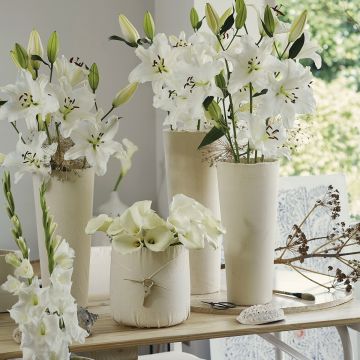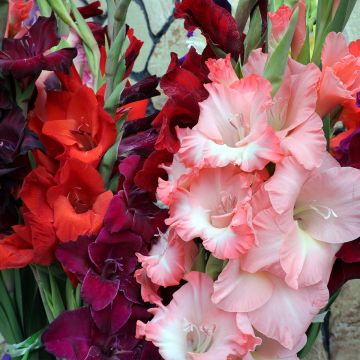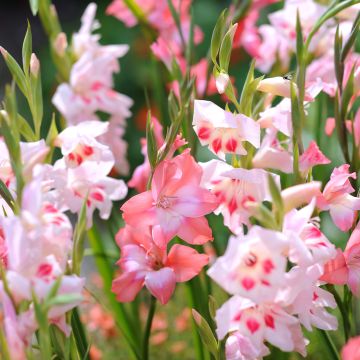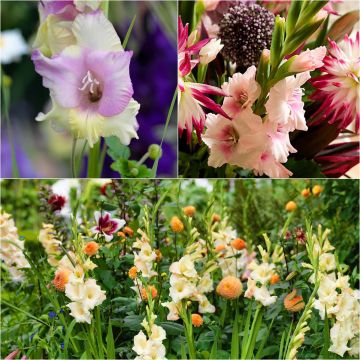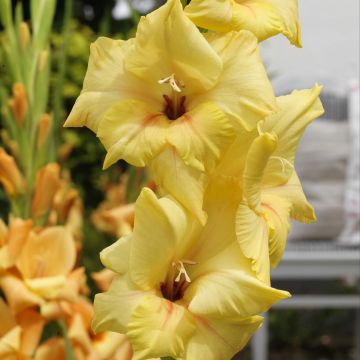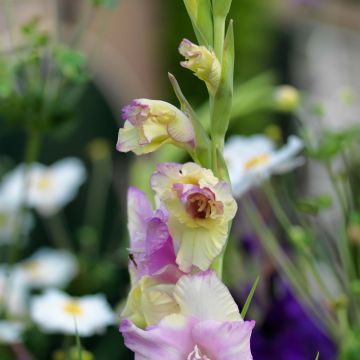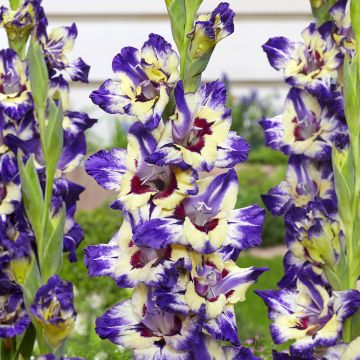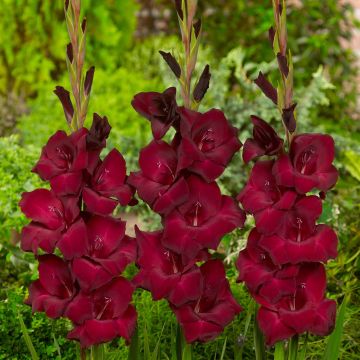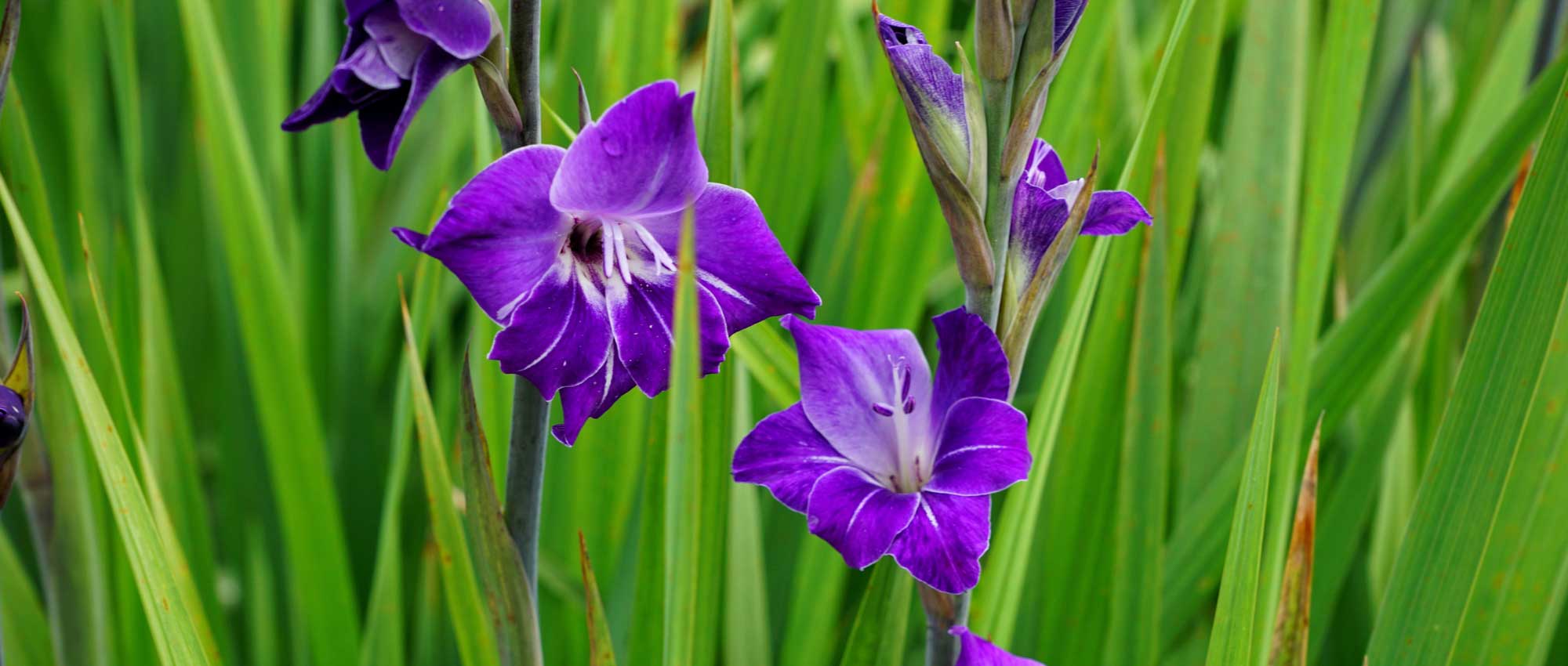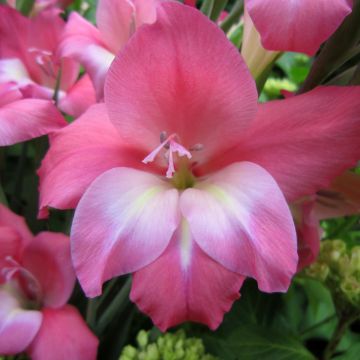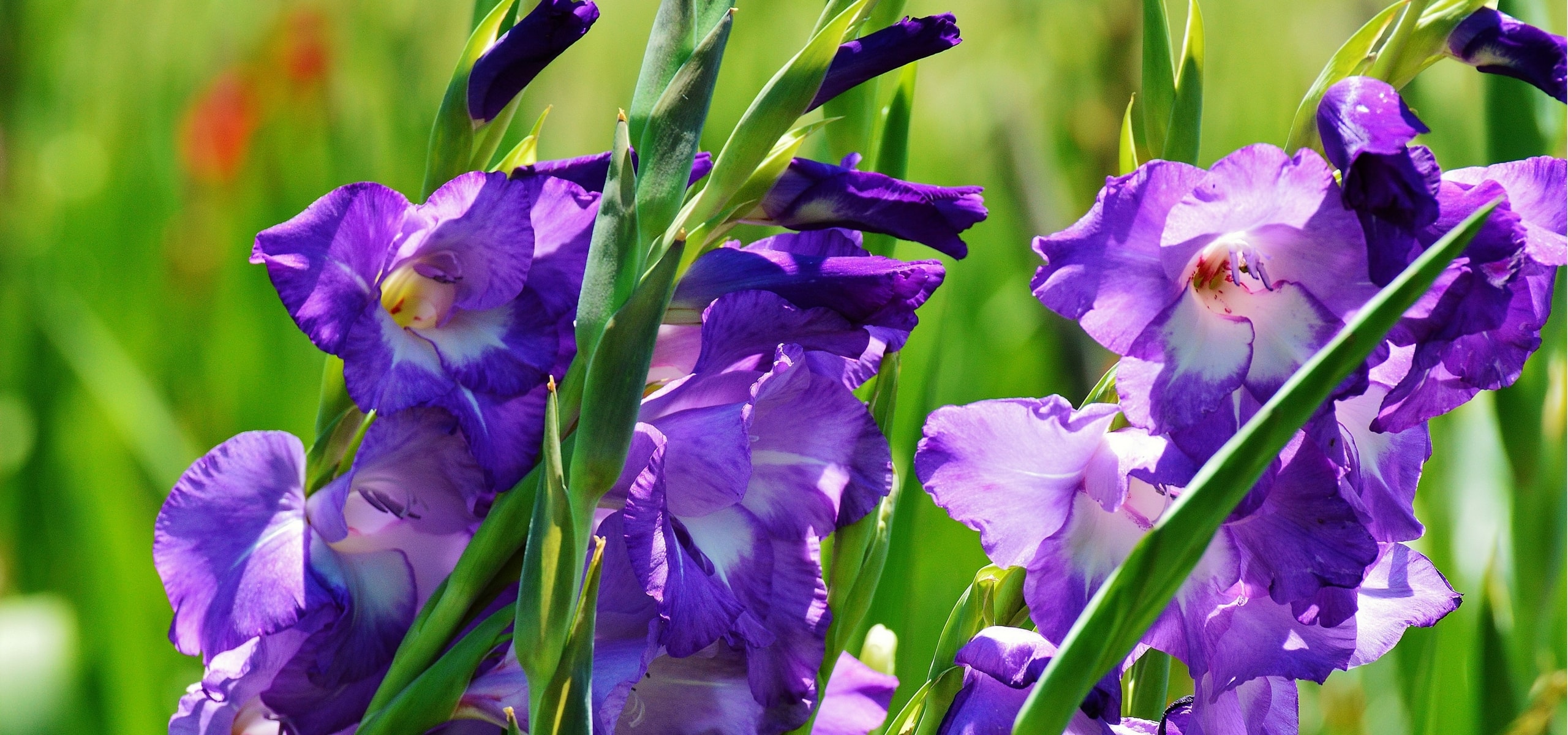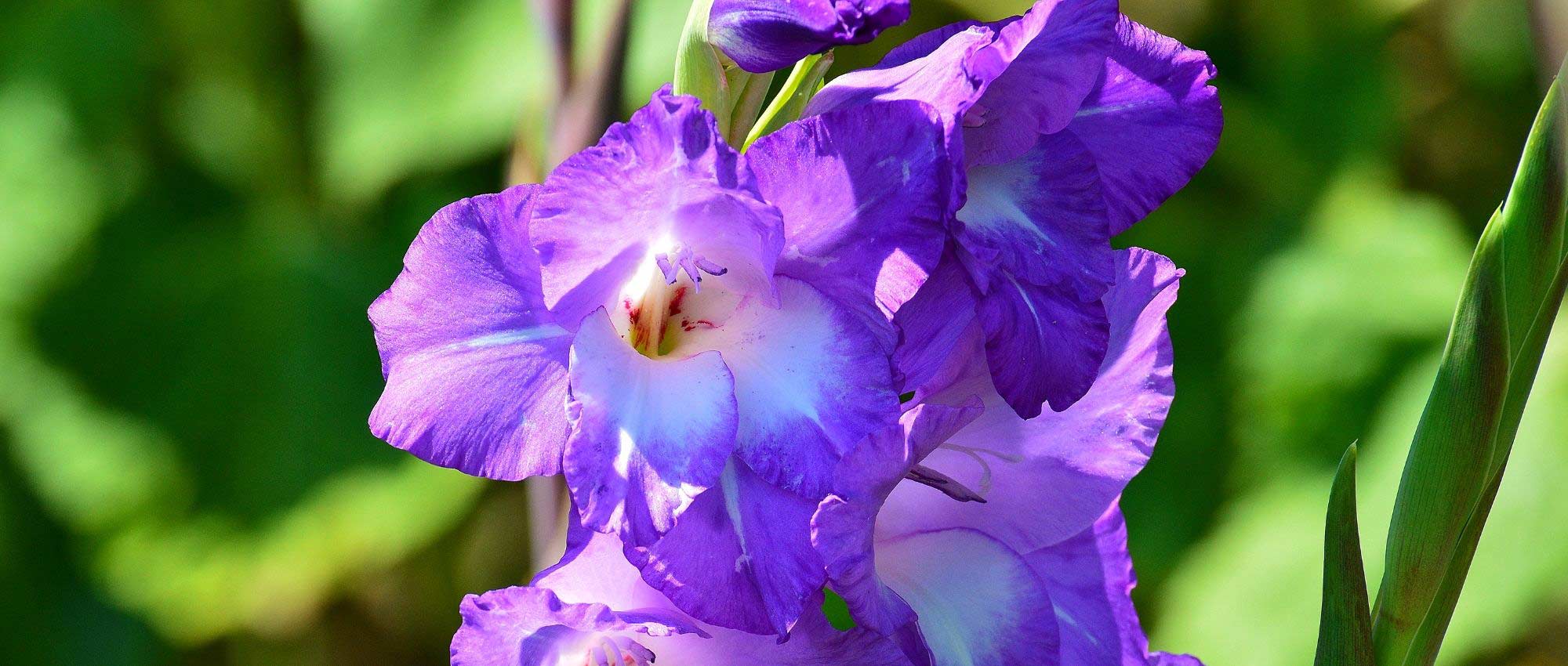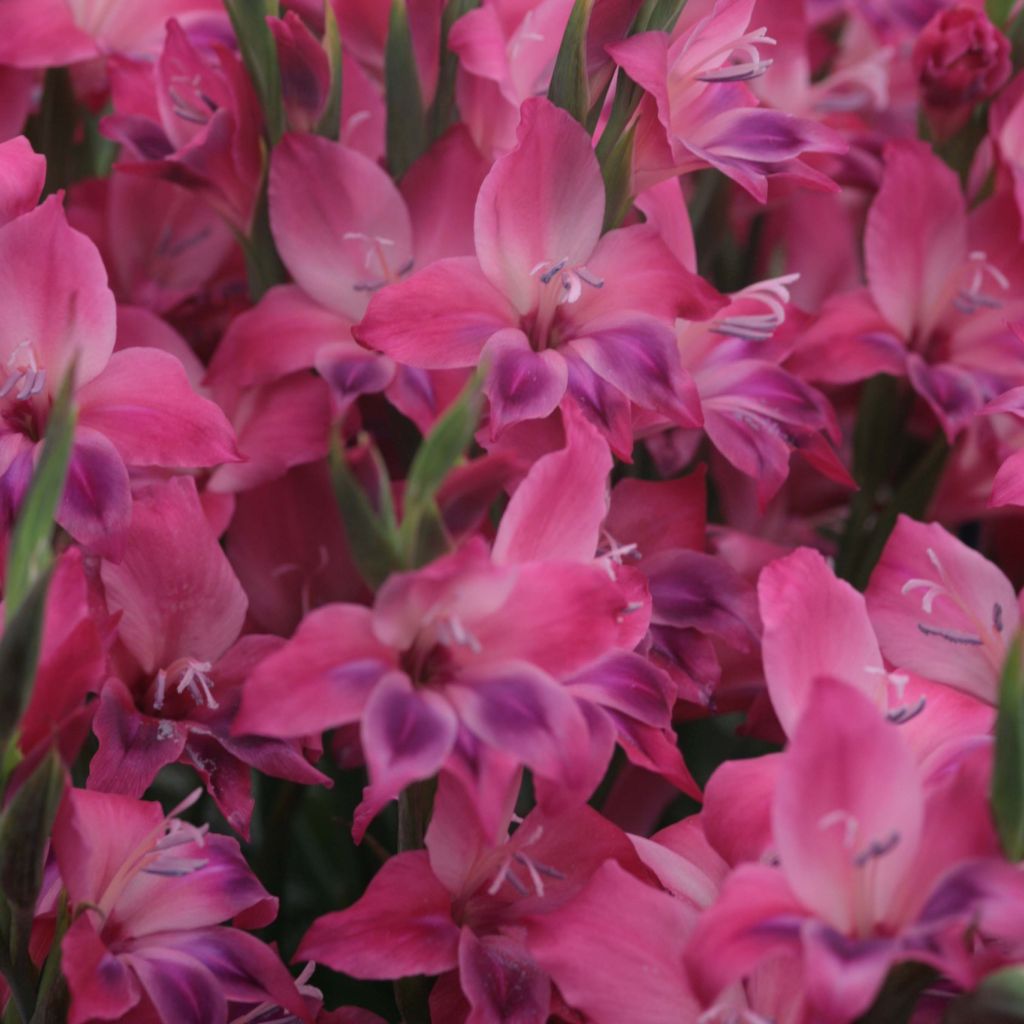

Gladiolus nanus Vulcano
Gladiolus nanus Vulcano
Gladiolus nanus Vulcano
Nanus Gladiolus, Dwarf Gladiolus
They all flowered but were much taller than expected, so a bit disappointing.
marie, 09/09/2025
Special offer!
Receive a €20 voucher for any order over €90 (excluding delivery costs, credit notes, and plastic-free options)!
1- Add your favorite plants to your cart.
2- Once you have reached €90, confirm your order (you can even choose the delivery date!).
3- As soon as your order is shipped, you will receive an email containing your voucher code, valid for 3 months (90 days).
Your voucher is unique and can only be used once, for any order with a minimum value of €20, excluding delivery costs.
Can be combined with other current offers, non-divisible and non-refundable.
Why not try an alternative variety in stock?
View all →This plant carries a 6 months recovery warranty
More information
We guarantee the quality of our plants for a full growing cycle, and will replace at our expense any plant that fails to recover under normal climatic and planting conditions.
Does this plant fit my garden?
Set up your Plantfit profile →
Description
The Gladiolus nanus 'Vulcano' is a variety of dwarf gladiolus, charmingly named "butterfly gladiolus", which bears delicate and light flowers, pink fuchsia spotted with violet and white, from late spring. It has more than one advantage to reconcile bouquet enthusiasts and perennial plant lovers. Its hardiness allows it to survive the winter in the garden in most parts of the region and its short stems are not afraid of the wind. With its graceful silhouette, it will find its place in natural gardens and undoubtedly in cottage gardens.
Cultivated gladioli, belonging to the iris family, are hybrids. They are divided into 3 main groups: Grandiflorus (large-flowered), Primulinus (early-flowering) and Nanus (butterflies). 'Vulcano' belongs to the third group. It blooms in June, before the large-flowered gladioli. These Nanus group gladioli are characterised by their bright-coloured spots reminiscent of butterfly wings. Each bulb (or corm) produces two or three slender spikes 30 to 40 cm (12 to 16in) long , bearing flowers 4 to 5 cm (2in) in diameter. Vulcano flowers are very brightly coloured in pink fuchsia, the lower petals are spotted with purple-violet, and the large upper petal is washed with white. The foliage is slender, sword-shaped, glaucous green marked with purple at the base, arranged in a fan shape, forming a clump 60 cm (24in) tall.
Dwarf gladioli are hardier than large gladioli. In the garden, their elegant silhouette will blend well with grasses and perennial flowers with light blooms. Plant them in groups in borders with salvias, tobacco plants, willowherbs and bee balms, wallflowers and forget-me-nots. They are perfect plants for cottage gardens. The dwarf gladiolus 'Vulcano' will look particularly lovely planted in a large container. For making bouquets, pick the gladioli early in the morning when they have opened two or three flowers. Leave 5 to 6 leaves per stem to allow the bulb to continue its development. Remove the first two buds at the top of the flower spike. Plant them every ten days in March/April. This way, you will have flowers all summer.
The gladiolus gets its name from the shape of its sword-like leaves, derived from the Latin gladius. Its wild forms were often represented in jewelry or on tapestries and fabrics made by the Semites before the Christian era.
Gladiolus nanus Vulcano in pictures
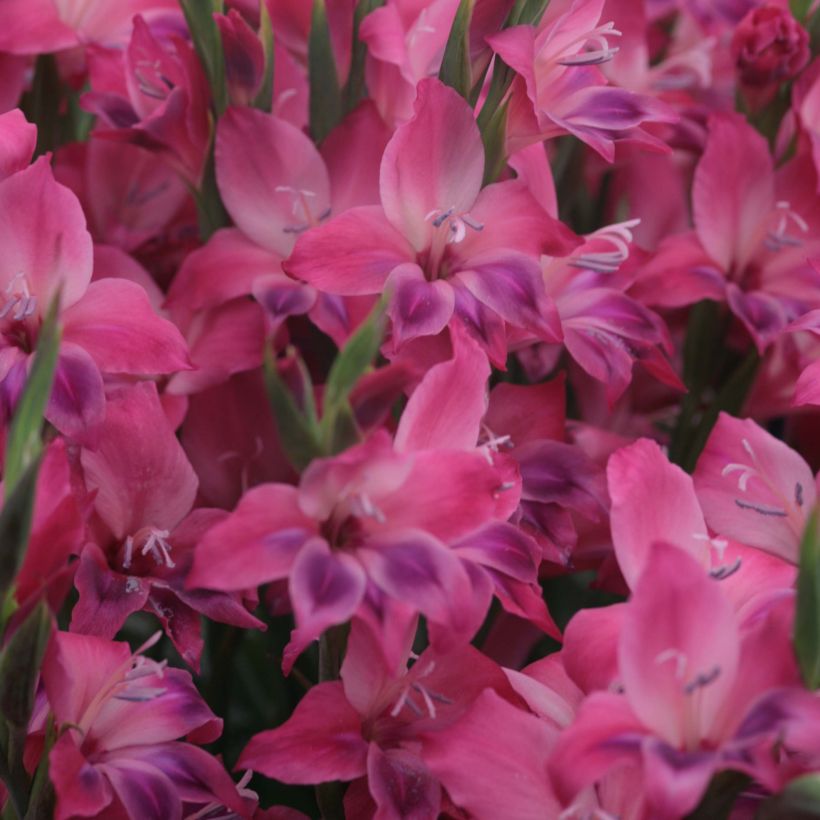

Plant habit
Flowering
Foliage
Botanical data
Gladiolus
nanus
Vulcano
Iridaceae
Nanus Gladiolus, Dwarf Gladiolus
Cultivar or hybrid
Other Gladioli
View all →Planting and care
The Gladiolus nanus 'Vulcano' appreciates light, deep, not too rich but well-drained soils, so sandy soils. Plant it in full sun. Space the bulbs or corms 10 to 15 cm (4 to 6in) apart and cover them with 10 cm (4in) of soil. Fertilize after cutting the flowers. Avoid using manure, which promotes bulb rot. Dwarf gladioli are less susceptible to frost than tall gladioli. They can overwinter in the ground, provided they are given winter protection such as a straw or dry leaf mattress. Their short stems do not require staking. Cut the foliage to ground level once the plant is dry.
Planting period
Intended location
Care
Planting & care advice
-
, onOrder confirmed
Reply from on Promesse de fleurs
Haven't found what you were looking for?
Hardiness is the lowest winter temperature a plant can endure without suffering serious damage or even dying. However, hardiness is affected by location (a sheltered area, such as a patio), protection (winter cover) and soil type (hardiness is improved by well-drained soil).

Photo Sharing Terms & Conditions
In order to encourage gardeners to interact and share their experiences, Promesse de fleurs offers various media enabling content to be uploaded onto its Site - in particular via the ‘Photo sharing’ module.
The User agrees to refrain from:
- Posting any content that is illegal, prejudicial, insulting, racist, inciteful to hatred, revisionist, contrary to public decency, that infringes on privacy or on the privacy rights of third parties, in particular the publicity rights of persons and goods, intellectual property rights, or the right to privacy.
- Submitting content on behalf of a third party;
- Impersonate the identity of a third party and/or publish any personal information about a third party;
In general, the User undertakes to refrain from any unethical behaviour.
All Content (in particular text, comments, files, images, photos, videos, creative works, etc.), which may be subject to property or intellectual property rights, image or other private rights, shall remain the property of the User, subject to the limited rights granted by the terms of the licence granted by Promesse de fleurs as stated below. Users are at liberty to publish or not to publish such Content on the Site, notably via the ‘Photo Sharing’ facility, and accept that this Content shall be made public and freely accessible, notably on the Internet.
Users further acknowledge, undertake to have ,and guarantee that they hold all necessary rights and permissions to publish such material on the Site, in particular with regard to the legislation in force pertaining to any privacy, property, intellectual property, image, or contractual rights, or rights of any other nature. By publishing such Content on the Site, Users acknowledge accepting full liability as publishers of the Content within the meaning of the law, and grant Promesse de fleurs, free of charge, an inclusive, worldwide licence for the said Content for the entire duration of its publication, including all reproduction, representation, up/downloading, displaying, performing, transmission, and storage rights.
Users also grant permission for their name to be linked to the Content and accept that this link may not always be made available.
By engaging in posting material, Users consent to their Content becoming automatically accessible on the Internet, in particular on other sites and/or blogs and/or web pages of the Promesse de fleurs site, including in particular social pages and the Promesse de fleurs catalogue.
Users may secure the removal of entrusted content free of charge by issuing a simple request via our contact form.
The flowering period indicated on our website applies to countries and regions located in USDA zone 8 (France, the United Kingdom, Ireland, the Netherlands, etc.)
It will vary according to where you live:
- In zones 9 to 10 (Italy, Spain, Greece, etc.), flowering will occur about 2 to 4 weeks earlier.
- In zones 6 to 7 (Germany, Poland, Slovenia, and lower mountainous regions), flowering will be delayed by 2 to 3 weeks.
- In zone 5 (Central Europe, Scandinavia), blooming will be delayed by 3 to 5 weeks.
In temperate climates, pruning of spring-flowering shrubs (forsythia, spireas, etc.) should be done just after flowering.
Pruning of summer-flowering shrubs (Indian Lilac, Perovskia, etc.) can be done in winter or spring.
In cold regions as well as with frost-sensitive plants, avoid pruning too early when severe frosts may still occur.
The planting period indicated on our website applies to countries and regions located in USDA zone 8 (France, United Kingdom, Ireland, Netherlands).
It will vary according to where you live:
- In Mediterranean zones (Marseille, Madrid, Milan, etc.), autumn and winter are the best planting periods.
- In continental zones (Strasbourg, Munich, Vienna, etc.), delay planting by 2 to 3 weeks in spring and bring it forward by 2 to 4 weeks in autumn.
- In mountainous regions (the Alps, Pyrenees, Carpathians, etc.), it is best to plant in late spring (May-June) or late summer (August-September).
The harvesting period indicated on our website applies to countries and regions in USDA zone 8 (France, England, Ireland, the Netherlands).
In colder areas (Scandinavia, Poland, Austria...) fruit and vegetable harvests are likely to be delayed by 3-4 weeks.
In warmer areas (Italy, Spain, Greece, etc.), harvesting will probably take place earlier, depending on weather conditions.
The sowing periods indicated on our website apply to countries and regions within USDA Zone 8 (France, UK, Ireland, Netherlands).
In colder areas (Scandinavia, Poland, Austria...), delay any outdoor sowing by 3-4 weeks, or sow under glass.
In warmer climes (Italy, Spain, Greece, etc.), bring outdoor sowing forward by a few weeks.






























